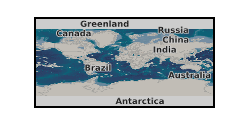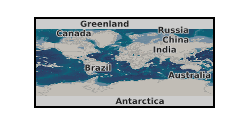Saturation
Type of resources
Available actions
Topics
Keywords
Contact for the resource
Provided by
Years
Formats
Update frequencies
-

This dataset contains VASP runs performed on ARCHER to calculate the electrical and thermal conductivities of pure iron and iron alloys at Earth's core conditions using density functional theory with the Kubo-Greenwood formulation. Data are available for both the solid and the liquid phase characterising the inner and outer core respectively. Also included in the dataset the runs for computing the lattice contribution to the electrical resistivity of magnetic bcc iron at ambient pressure and two low temperatures and for computing the melting curve of fcc nickel. These data were also used for the modelling of the geodynamo and the thermal history of the Earth, to calculate the transport properties for silicon-oxygen-iron mixtures and to confirm the saturation of electrical resistivity of solid iron at Earth’s core conditions. The results from this dataset showed that both conductivities are much larger than previously thought with important implications for the geodynamo and the thermal history of the Earth, benefitting the geodynamo community. The results of our research have been recently confirmed by new experimental results obtained at Earth's core conditions. Further details can be found in Alfè et al. (2012); Pozzo et al. (2012, 2013a, 2013b, 2014, 2016); Gubbins et al. (2015); Davies et al. (2015). NERC Grant is NE/H02462X/1.
-

FWHM of 19 aragonite samples precipitated from seawater, using a pH stat titrator using the constant composition technique between August 2020 and December 2022. Aragonite precipitation rates are estimated from the rate of titrant dosing. Data were collected to determine how changes in the calcification fluids of calcareous organisms affect aragonite structure. Data were collected by Cristina Castillo Alvarez and Nicola Allison and interpreted by Cristina Castillo Alvarez, Nicola Allison, Adrian Finch, Kirsty Penkman, Roland Kröger and Matthieu Clog.
-

Datasets are grouped in different levels. Two main levels exist. Raw data includes processed seismic data and ERT inversion results. Seismic mass estimation relies on amplitude differences and timeshifts. ERT inversion results have been converted from VTK. • Raw *Seismic - 2009: Two datasets for Amplitude differences and Timeshifts - 2012: Two datasets for Amplitude differences and Timeshifts *ERT - 2009: One dataset with [x,y,z,Resistivity,Volume,Active] - 2012: One dataset with [x,y,z,Resistivity,Volume,Active] • Processed *Seismic - Mass_2009 - Mass_2012 * ERT - Gridded_2009 - Gridded_2012 - Seismic_ERT_Mesh_1x1 - Seismic_ERT_Mesh_1x1_CDP_Adjusted_6.25m - Seismic_ERT_Mesh_1x1_CDP_Adjusted_12.5m The dataset was created within SECURe project (Subsurface Evaluation of CCS and Unconventional Risks) - https://www.securegeoenergy.eu/. This project has received funding from the European Union’s Horizon 2020 research and innovation programme under grant agreement No 764531 (ENER/H2020/764531/SECURe).
 NERC Data Catalogue Service
NERC Data Catalogue Service